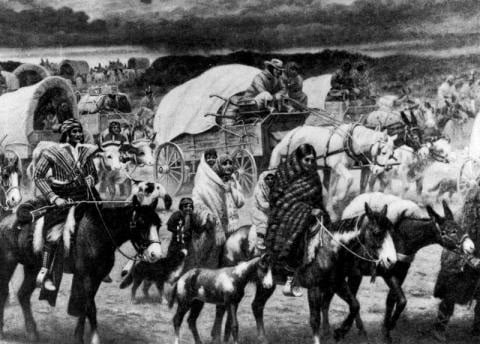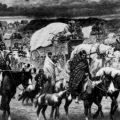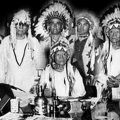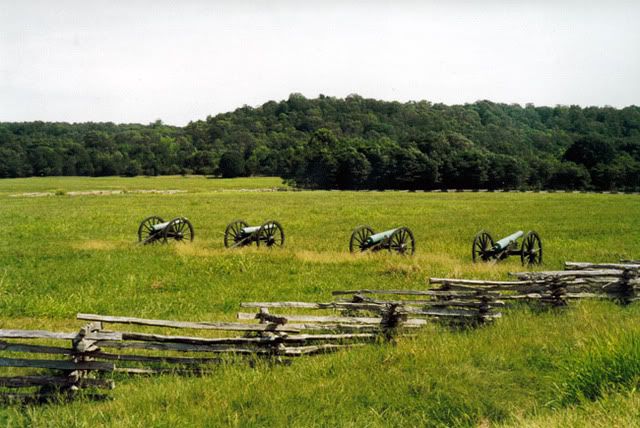Since its founding, the United States, and particularly the states that compose it, has been uncomfortable with having Indians nations within its boundaries. Motivated by a combination of greed, racism, and religion, non-Indians debated two basic solutions to the Indian “problem”: removing Indian nations from the United States by relocating them west of the Mississippi River, and/or genocide. These solutions began with law in 1830 with the passage of the Indian Removal Act.

In 1835, American settlers invaded Cherokee territory and filed lawsuits against the Indians. The Indians, under state law, were not able to testify against the Americans so the Indians always lost. Some Americans stripped Indian men and women and flogged them. When General Ellis Wool attempted to protect the Cherokee, the state of Alabama accused him of disturbing the peace and interfering with the rights of Alabama citizens.
In 1835, the United States presented the Cherokee with a new treaty. The offer which the United States presented to the Cherokee was simple: if the tribe signed the treaty, the Cherokee would surrender their ancient homelands and move to the west. If the Cherokee did not sign, then the United States military would herd them at bayonet point from their homes and move them to the west.
Seeing no realistic alternative, some Cherokee leaders – primarily Major Ridge, John Ridge, Elias Boudinot, Andrew Ross, James Starr, Stand Watie, James Rogers, Thomas Watie, Archilla Smith, John A. Bell, Charles Foreman, George W. Adair, and others of the Treaty Party – signed the Treaty of New Echota. None of those signing the treaty had been authorized by the Cherokee Nation to sign it. In signing the treaty, all realized that they had violated Cherokee law, a law with a death penalty.
Under the terms of this treaty, the Cherokee were to give up all of their lands east of the Mississippi and to move to what is now Oklahoma and Arkansas. Cherokee Principal Chief John Ross repudiated the treaty because it had been signed by a minority of the Cherokee leaders. The United States, however, contended that they had informed the Cherokee that all leaders who did not attend the treaty conference would be considered to have approved any document signed by the negotiators.
In 1836, Cherokee Principal Chief John Ross met with President Andrew Jackson in a courtesy visit. Jackson brought up the issue of removal, indicating he would be unable to protect the tribe as long as they lived among non-Indians.
That same year, Cherokee Principal Chief John Ross addressed the U.S. Senate, providing them with an outline of the abuse and injustice done to the Cherokee. He presented them with two protest resolutions – one signed by 3,250 North Carolina Cherokee and one representing more than 12,000 Cherokee – asking that the Treaty of New Echota not be ratified. While the government claimed that the Cherokee General Council had approved the treaty and that 500 Cherokee were present when it was adopted, neither was true. It had been signed by a few dozen Cherokee, many of whom had already agreed to emigrate. The Senate, by a margin of one vote, ratified the treaty.
As soon as the new treaty was ratified by the Senate, President Andrew Jackson issued a proclamation that the United States no longer recognized the existence of any government among the Cherokee in the Southeast. Furthermore, the Cherokee were warned that any resistance to removal would be met by force through the army.
In 1836, General Ellis Wool forwarded Cherokee protests over removal to Washington, D.C. He explained: “It is, however, vain to talk to a people almost universally opposed to the treaty and who maintain that they never made such a treaty.” He also reported: “Many have said they will die before they will leave the country.”
In response, President Jackson rebuked the General for forwarding the Cherokee protests, declaring them to be disrespectful of the President, the Senate, and the American people.
In 1836, Major W.M. Davis, appointed to enroll the Cherokee for removal, reported that the removal treaty “is no treaty at all, because it is not sanctioned by the great body of the Cherokee and made without their participation or assent. I solemnly declare to you that upon its reference to the Cherokee people it would be instantly rejected by nine-tenths of them, and I believe by nineteen-twentieths of them.”
In 1936, Cherokee Principal Chief John Ross visited the Western Cherokee. He conferred with the chiefs and visited relatives. The Indian agents in the area had been ordered to arrest him and so Western Cherokee Chief John Jolly met with Ross in private to avoid any possible legal trouble.
In 1837, Cherokee Principal Chief John Ross was denied a meeting with President Martin Van Buren. He found that the new President was intent on retaining President Andrew Jackson’s policies regarding Cherokee removal.
The Cherokee National Council sent a delegation which included John Ross, Elijah Hicks, Situwakee, and Whitepath to Washington, D.C. in 1838 to present Congress with a petition signed by 15,665 people protesting their removal treaty. However, the governor of Georgia has informed the President that any delay in Cherokee removal would be a violation of the rights of the state. President Martin Van Buren refused to grant the Cherokee request for a delayed removal. With this the stage for a rapid removal of the Cherokee to the west was set. The event which would become known as the trail of tears would follow.




Leave a Reply